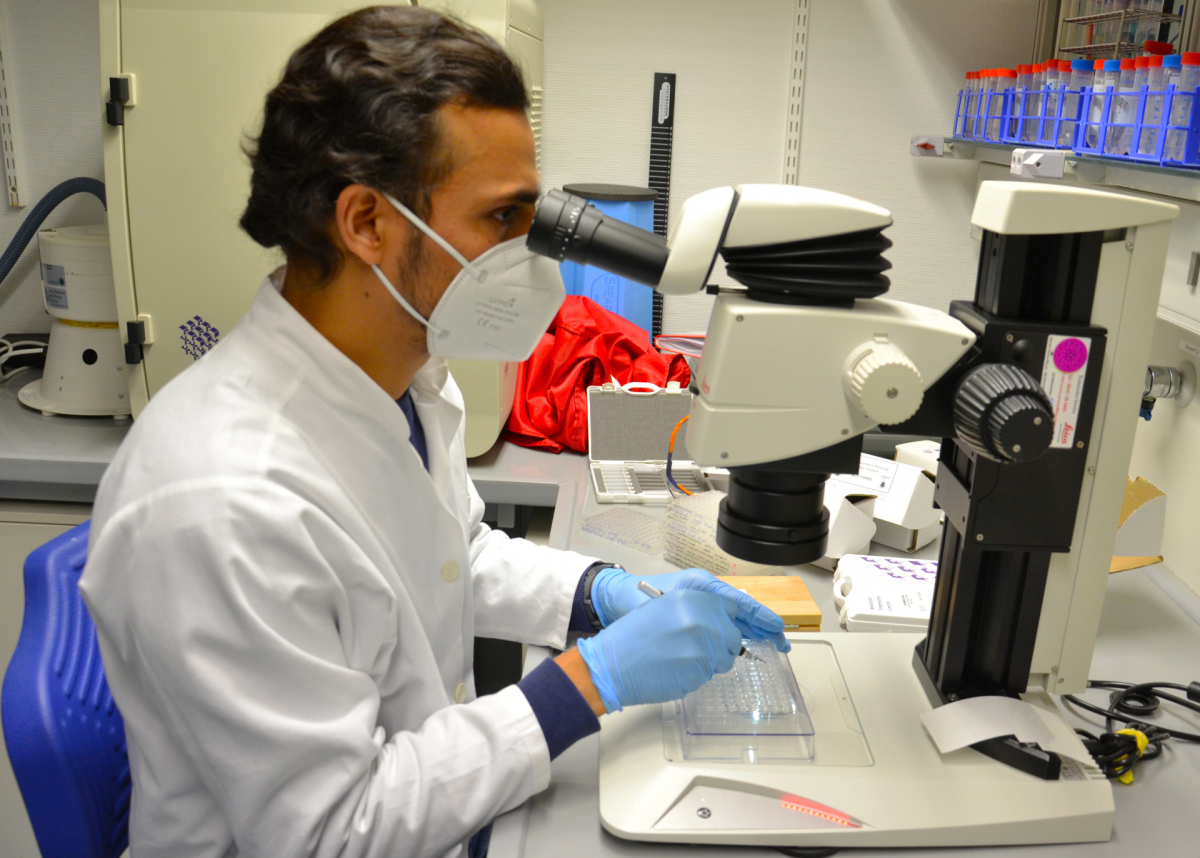- Press Office
- Press releases 2022
- Molecular clues reveal that bacteria devour fungi in the ocean
Molecular clues reveal that bacteria devour fungi in the ocean
Marine bacteria play a decisive role in the decomposition of biomass from higher marine organisms, such as animals, algae and fungi. In case of marine fungi, not much is known about the underlying mechanisms. Some marine fungi are parasitic and can infect marine microalgae, in particular during algal blooms. When researchers at the Max Planck Institute for Marine Microbiology in Bremen, Germany, studied a North Sea bacterium known to thrive on algae during blooms, they were surprised to find an enzyme targeting a specific polysaccharide (a kind of sugar) known to occur only in fungi. The researchers could show how this novel enzyme digests a fungal polysaccharide. Similar polysaccharides occur in the yeasts that humans use for baking bread or brewing beer, and the mechanism is surprisingly similar albeit not identical to a mechanism employed by human gut bacteria. The scientists have reported their findings recently in The ISME Journal.
Underestimated players in the marine food web
Bacteria in the oceans are known to feed on algal sugars, so-called polysaccharides. These make for a nutrient-rich meal especially after the demise of algal blooms, when the seawater is full of algal biomass. A team of scientists around Vipul Solanki from the Max Planck Institute for Marine Microbiology has now found that a bacterium that thrives on algal polysaccharides is more versatile than expected: It can also decompose an exclusively fungal polysaccharide. The bacterium itself was isolated from seawater collected off Helgoland Island in the German Bight. “This is the first time we find how a bacterium degrades a polysaccharide from a marine fungus”, says Solanki. “We believe that the role of fungi in the marine food web, in particular during algae blooms, has so far been underestimated.”
Substrates from marine fungi are food for bacteria
The fungal polysaccharide detected is an alpha-1,6-mannan. Other mannans have been found in algae, but this particular type of mannan is specific to fungi. The scientists got on its trail, because they found the genes coding for enzymes that target alpha-1,6-mannans, including the key enzyme, termed ShGH76. “Such enzymes are known from bacteria of the human gut. There they target mannans from the yeasts that humans use to bake bread or brew beer”, Solanki explains. “However, we did not expect this in a marine bacterium, which is why we studied this enzyme in detail”. An interdisciplinary team of researchers, uniting expertise in glycobiology, protein crystallography, biochemistry and genomics was necessary to describe this enzyme and identify its unexpected substrate. Solanki points out that “in particular X-ray diffraction of crystallized ShGH76 together with synthetic oligomannan substrates did provide information about the mechanism of this enzyme”.
A missing piece in the marine carbon cycle
What exactly is the marine fungus of origin doing? Most probably, it infects algae. The scientists suspect so, as ShGH76-like genes are particularly abundant in microbial communities during algae blooms. Therefore, the fungi might play two important roles in the marine carbon cycle: First, their parasitism on algae makes algal biomass accessible for marine bacteria, and second, they themselves represent a food source for bacteria. “The turnover of such fungal organic matter does play a role in the marine carbon cycle, yet the extent and detailed mechanisms are currently not well understood”, Solanki stresses. “Our study provides a first stepping stone towards a deeper understanding of this neglected part of the marine carbon cycle.”
Original publication
Vipul Solanki, Karen Krüger, Conor J. Crawford, Alonso Pardo-Vargas, José Danglad-Flores, Kim Le Mai Hoang, Leeann Klassen, D. Wade Abbott, Peter H. Seeberger, Rudolf I. Amann, Hanno Teeling and Jan-Hendrik Hehemann (2022): Glycoside hydrolase from the GH76 family indicates that marine Salegentibacter sp. Hel_I_6 consumes alpha-mannan from fungi. The ISME Journal (published 12 April 2022)
Participating institutions
- Max Planck Institute for Marine Microbiology, 28359 Bremen, Germany
- Max Planck Institute of Colloids and Interfaces, 14476 Potsdam, Germany
- Lethbridge Research and Development Centre, Agriculture and Agri-Food Canada, Lethbridge, AB T1J 4B1, Canada
- University of Bremen, Center for Marine Environmental Sciences, MARUM, 28359 Bremen, Germany
Please direct your queries to:
Head of Press & Communications
MPI for Marine Microbiology
Celsiusstr. 1
D-28359 Bremen
Germany
|
Room: |
1345 |
|
Phone: |


